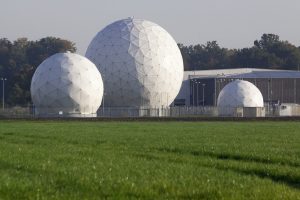The New Home Laboratory: Science Spaces for Kids
Welcome to the new generation of home laboratories! With the rise of homeschooling and remote learning, parents are now looking for ways to create a dynamic learning environment for their kids at home. And what better way to do so than by incorporating a science space for kids right in the comfort of your own home. The new home laboratory has become a must-have for families who are looking to provide their children with hands-on learning experiences and foster their curiosity and love for science. In this article, we’ll discuss the importance of having a science space for kids and how you can create one in your own home.
The Benefits of a Science Space for Kids
As an essential element of STEAM (science, technology, engineering, arts, and mathematics) education, science spaces offer a variety of benefits for children. Here are some reasons why every home should have a dedicated laboratory for kids:
1. Encourages Curiosity and Critical Thinking
Children are naturally curious beings and having a science space at home gives them the opportunity to explore and experiment. By providing them with resources and materials, they can freely and creatively think about problems, come up with their own solutions, and learn from their own successes and failures.
2. Hands-On Learning Experience
Science is best learned through hands-on experiences, and a home laboratory provides just that. It allows children to engage in experiments, observe changes, and make discoveries, which brings a sense of wonder and excitement to the learning process.
3. Develops a Love for Science
By providing children with a dedicated space for science, parents can nurture their love and interest in this subject. As they engage in experiments and learn more about the world around them, children can develop a deep appreciation for science, leading to a potential career path in this field.
4. Reinforces STEM Concepts
Science spaces give children the opportunity to apply what they have learned in the classroom and reinforce concepts in STEM subjects. This can help children better understand scientific principles and develop problem-solving skills, critical thinking, and analytical skills.
Creating Your Own Science Space at Home
Now that you understand the benefits of having a home laboratory for kids, you may be wondering how to create one. Here are some key elements to consider when setting up a science space:
1. Location
Choose a location in your home that is quiet, well-lit, and has enough space for experiments and storage. It can be a den, basement, or spare room that is easily accessible for both you and your child.
2. Safety First
Since it involves experiments and potentially hazardous materials, safety should be a top priority in your science space. Make sure to have safety equipment, such as goggles and gloves, and teach your child proper safety procedures.
3. Stock Up on Supplies
Consider investing in science kits, books, and equipment that are age-appropriate for your child. You can also use household items such as empty containers, baking soda, vinegar, and food coloring for simple experiments. It’s also a good idea to have a designated storage area in your science space to keep everything organized.
4. Get Creative
Your science space doesn’t have to be a traditional laboratory setting. Encourage creativity by incorporating art and crafts materials, and allow your child to decorate the space with their own designs and creations.
5. Make It a Family Activity
Science can be a fun and engaging activity for the whole family. Get everyone involved by doing experiments and learning together. This also provides an opportunity for your child to explain the concepts they have learned to others, reinforcing their understanding.
The Future of Education at Home
The new home laboratory is more than just a designated space for science experiments. It represents a shift in how we approach education at home. By providing hands-on experiences and fostering curiosity, we can help children develop essential skills for the future, such as critical thinking and problem-solving.
With the right resources, guidance, and support, parents can create an environment that sparks their child’s interest and passion for science. So why not start planning your own science space for kids and watch your child’s love for learning grow right in your own home?
Remember, a science space doesn’t have to be expensive or elaborate. What’s most important is providing your child with a space to explore, discover, and learn in their own unique way. So don’t wait, start building your home laboratory today!





